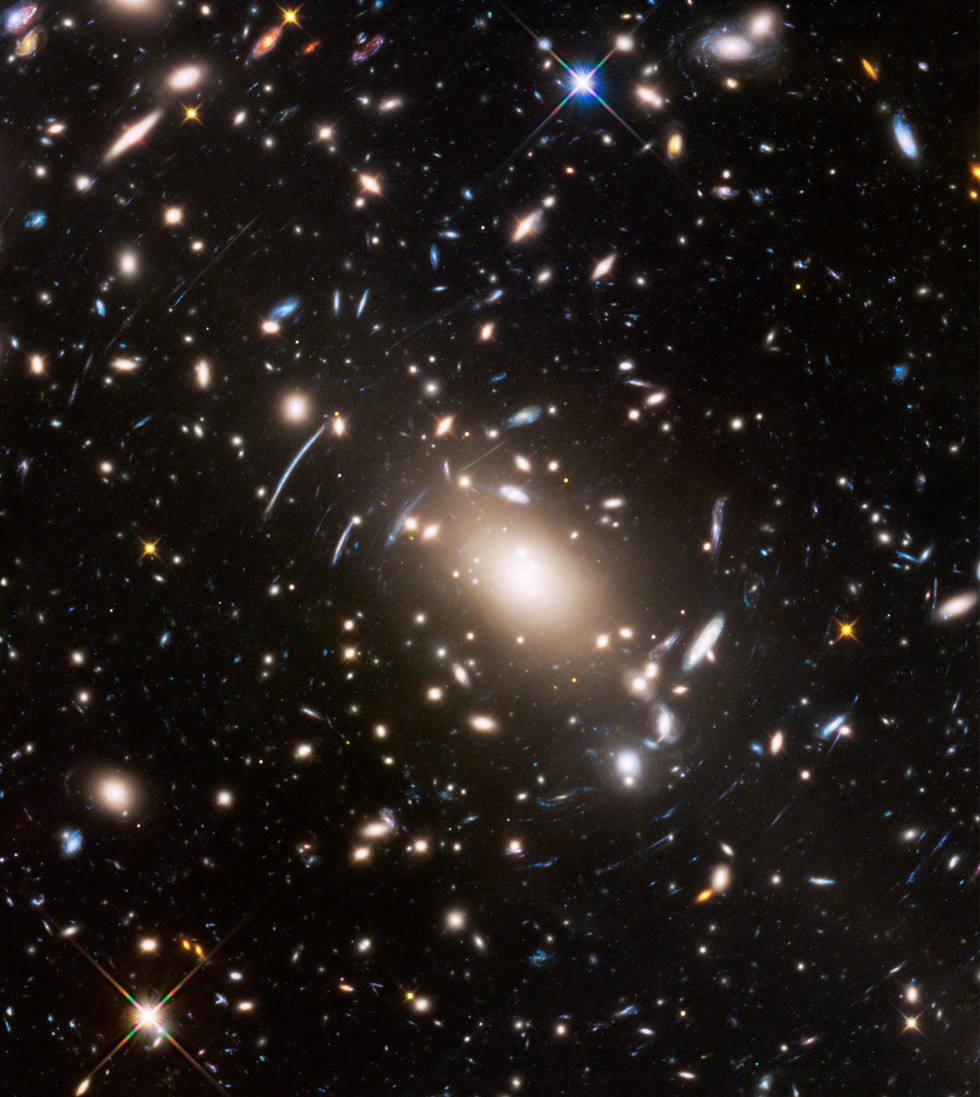The Hubble Space Telescope continues to use massive galactic clusters to create natural cosmic lenses to superboost its observing powers.
Just as "Star Trek Beyond" hits theaters, Hubble has released its own view of the final frontier.
Located some four billion light-years away, the Abell S1063 galaxy cluster creates a dazzling scene. The sheer mass of the cluster has corralled light from galaxies that exist way beyond Hubble's observing capabilities, creating those strange-looking arcs and warped galactic shapes.
The light from these far-away galaxies travels through the cluster, but as the space-time surrounding the cluster is warped by its mass, the light is deflected -- a bit like how the path of light is refracted through a magnifying lens. And it has the same effect; distant objects are magnified by these cosmic lenses, boosting Hubble's already impressive magnification. This is known as gravitational lensing and it is a direct prediction from Einstein's theory of general relativity.
The coolest thing is that Abell S1063 contains images of 16 background galaxies and one of those primordial galaxies existed only a billion years after the Big Bang. This ancient specimen comes from the first generation of galaxies to appear in the universe, so its light has taken nearly 13 billion years to travel from that galaxy, through the space-time magnification in the Abell S1063 cluster and into Hubble's lens.
Though seeing galaxies from the dawn of the universe is a scientific goldmine in itself, measurements of their distorted shapes can help astronomers map the distribution of dark matter within the cluster, helping us further refine our theories on what this mysterious mass could be.
Read more at Discovery News

No comments:
Post a Comment